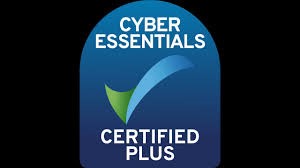Get Ready for the Upcoming Switch-Off

Openreach will be switching off both the traditional PSTN and ISDN networks and withdrawing all traditional products that rely on it by 2025. This will affect everyone in the country who is currently using traditional voice and PSTN-based broadband services (ADSL & VDSL). Whilst working with our customers, we’ve noticed some businesses haven’t thought about alternatives yet or what they need to do and when to upgrade their technology. If your company hasn’t yet thought about changing, now could be the right time to explore more about this and the benefits that come with this switch, moving to an all-IP alternative.
Why the switch off is happening and how will it impact your business?
Businesses all across the UK have been using analogue services for decades via Public Switched Telephone Network – PSTN or often referred to as landlines/fixed-line telephones. Introduced in the 1980’s, Integrated Service Digital Network (ISDN) was rolled out across the country as a replacement to PSTN lines and allowed for voice calls, send & receive faxes and data services, including the Internet, to travel over digital connections networks. However, the technology was expensive and was only really utilised by larger businesses. More affordable technology that could utilise existing infrastructure, such as ADSL was favoured instead.
Nearly all existing copper infrastructure is provided by Openreach which was further divested from BT in 2017 and they manage the PSTN. Openreach is moving towards a data only model meaning that new and existing infrastructure will be used for IP (Internet Protocol) traffic meaning that they will no longer be used to carry traditional voice traffic.
For those currently operating with ISDN based phone systems it means that your existing phone lines will no longer be operational from December 2025.
That might seem a long way off, but in effect the switch off has started already. All businesses should be aware of this termination date and put a contingency plan in place by 2023. This is when the supply of new analogue voice, ISDN and traditional broadband services will be withdrawn. This means customers will no longer be able to purchase new PSTN/ISDN phone lines or traditional broadband solution such as VDSL aka. Fibre-to-the-Cabinet (FTTC). They will also not change or upgrade their service or increase capacity. Some of your existing ISDN compatible hardware may also reach end of support before the deadline, and with no new replacements available.
Those with newer ISDN-based phone systems may be able to switch over to using VoIP without having to replace the entire system, utilising previous investments in handsets, however this would be on a case-by-case basis and may require some additional hardware.
What services will be switched off by 2025 and what does it mean for your internet connection?
Depending on what system your business relies on, you may need to upgrade things such as traditional voice, broadband and any services that connect to it as they will cease to work. This includes:
- WLR3 analogue, ISDN2, ISDN30;
- LLU SMPF, SLU SMPF, Narrowband Line Share;
- ADSL & VDSL (aka. FTTC) broadband;
- Payment terminals, security systems, fire/intruder and healthcare alarms (Redcare), emergency phones in lifts, CCTV cameras and monitoring equipment and telecare devices etc.
This represents the biggest shake up to communications and connectivity in decades. You need to review your communication infrastructure to understand how the switch-off will affect your business.
What are your options?
Traditional copper network and outgoing PSTN or ISDN services will be replaced by IP services.
Making the switch to faster connectivity and all-IP communications should be seen as an opportunity to make your business more productive, efficient, and cost-effective. As far as connectivity is concerned, most businesses will opt for one of three choices.
- Full fibre (FTTP) connectivity with speeds up to 1 Gbps, plus telephone line.
- SoGEA (Single order Generic Ethernet Access) with only data and maximum download speeds are up to around 80Mbps, your voice services will have to switch to digital. This is basically a VDSL FTTC service that is delivered ‘wires only’ with no dial tone (or associated line rental).
- SoFAST (Single order G.Fast) which offers download speeds up to around 300Mbps.
Once you’ve updated your connectivity, you will need to purchase a voice product. This simply means that your voice service will use the same connectivity as the rest of your data traffic.
Your options include:
- Hosted VoIP with your Telephony based in the cloud.
- On Premise VoIP System, hosted locally on site. This could utilise new or existing hardware.
Both options, depending on the solution, should allow you access from anywhere, providing you with the option to make work calls from laptops and smartphones, along with providing a range of powerful call management features. The main difference is that a Hosted solution will have a lower CapEx but an increased OpEx whereas it will be the other way around for an on-premise solution; a Hosted solution will cost more in the long run.
If you wish to find out more read our article “5 Hard-to-ignore benefits of business VoIP phone systems” and check out our collection of VoIP for business FAQs. Don’t hesitate to give us a call, our team is always ready to help.

